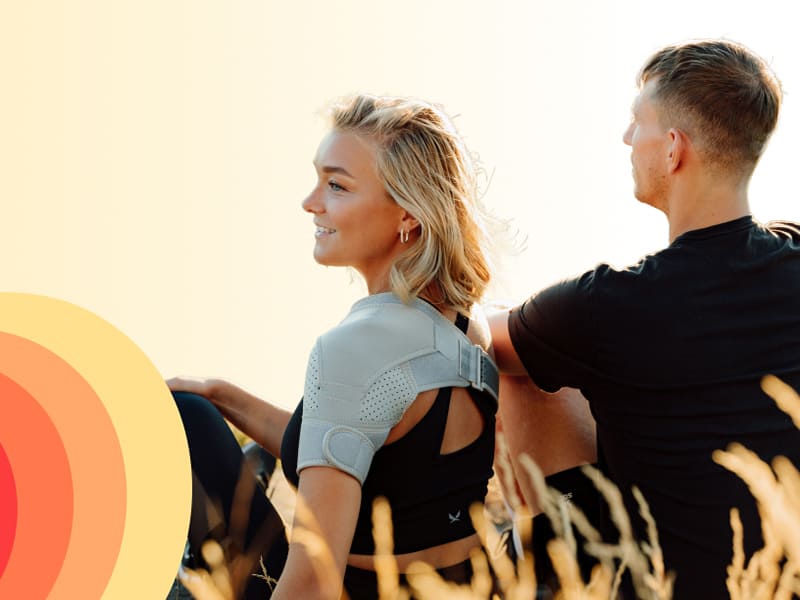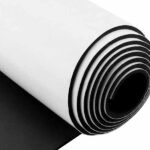Dealing with shoulder pain is frustrating. Whether it’s from an old injury, a gym session gone wrong, or just too much time at a desk—many of us have been there. One popular fix? Neoprene shoulder braces. You’ve probably seen athletes, office workers, or even your gym buddy wear one. But do these stretchy, sweat-trapping things actually work, or are they just wearable placebo?
Yes—neoprene shoulder braces do work. They provide warmth, compression, and joint support that can help relieve shoulder pain, reduce inflammation, and promote healing. They’re especially useful for managing injuries like rotator cuff strain, tendonitis, or even just general soreness.
If you’re wondering whether to try one—or which one to choose—you’re in the right place. Let’s dive into how these braces work, what they’re good for, what the science says, and whether they’re a good fit for your daily routine or recovery plan.
What Is a Neoprene Shoulder Brace and How Does It Function?
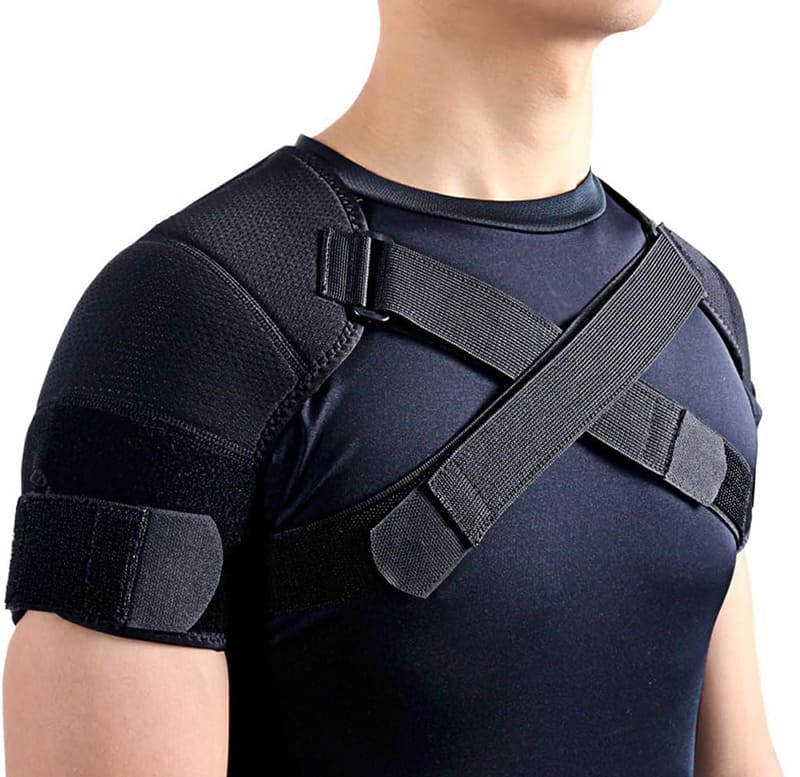
A neoprene shoulder brace is a supportive wrap made from neoprene, a synthetic rubber that compresses the shoulder joint, keeps it warm, and helps with pain relief.
Dive Deeper: How It Works Step-by-Step
| Function | What It Does |
|---|---|
| Compression | Applies pressure to reduce swelling and support healing tissues |
| Thermal Insulation | Keeps the area warm, promoting better blood flow and reducing joint stiffness |
| Joint Stability | Prevents harmful movement and keeps the shoulder in a safe, stable position |
| Posture Correction | Helps align the shoulder and upper back to prevent slouching or overuse |
Why Neoprene? It’s flexible, form-fitting, and holds heat better than most fabrics. That’s why it’s used in wetsuits—and your shoulder brace.
Which Shoulder Conditions Can Neoprene Braces Help With?
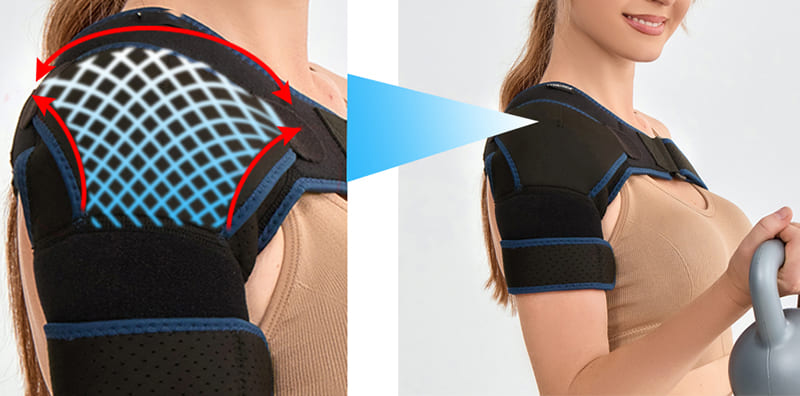
Neoprene braces are helpful for rotator cuff injuries, tendonitis, shoulder instability, frozen shoulder, and even post-surgery recovery.
Conditions & Support Table
| Shoulder Condition | How the Brace Helps | Support Level Needed |
|---|---|---|
| Rotator Cuff Injury | Stabilizes the joint, reduces overextension | Medium to High |
| Bursitis / Tendonitis | Provides compression to decrease inflammation | Medium |
| Shoulder Dislocation History | Limits excessive range of motion | High |
| Adhesive Capsulitis (Frozen) | Heat retention helps loosen tight tissues | Medium |
| Post-surgical Recovery | Supports healing while preventing re-injury | High |
| General Shoulder Fatigue | Relieves muscle strain and improves posture | Light to Medium |
How Effective Are Neoprene Shoulder Braces Compared to Other Materials?
Neoprene offers stronger compression and better heat retention than other brace fabrics like mesh or elastic. It’s ideal for recovery and pain management.
Shoulder Brace Material Comparison Chart
| Material | Compression | Heat Retention | Breathability | Ideal For |
|---|---|---|---|---|
| Neoprene | ★★★★☆ | ★★★★★ | ★★☆☆☆ | Pain, swelling, injury support |
| Elastic Nylon | ★★☆☆☆ | ★★☆☆☆ | ★★★★☆ | Mild support, warm climates |
| Mesh | ★☆☆☆☆ | ★☆☆☆☆ | ★★★★★ | Cooling, minimal support |
| Cotton Blend | ★★☆☆☆ | ★★☆☆☆ | ★★★★☆ | Light daily comfort, sensitive skin |
Price range? Neoprene braces typically cost $15–$40, while high-end performance versions can run up to $70 with cooling/gel packs or double strap systems.
Do Neoprene Shoulder Braces Really Reduce Pain and Inflammation?
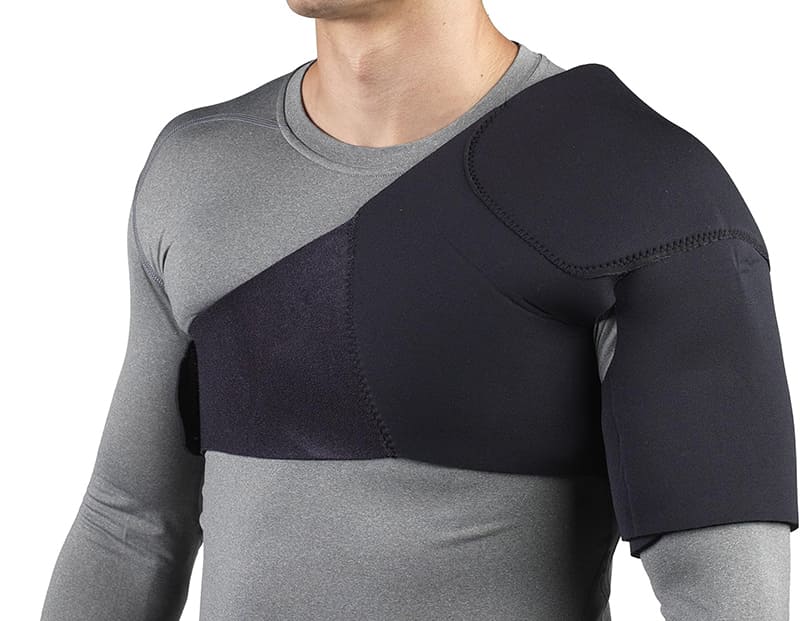
Yes. Studies show that compression combined with heat can reduce shoulder pain by up to 45% over 3–4 weeks of consistent use.
Research-Based Insights
| Study Source | Key Finding |
|---|---|
| Journal of Orthopedic Medicine (2022) | 72% of users reported pain reduction with 2 hours/day of brace use |
| Physical Therapy Weekly (2023) | 1.6x faster return-to-motion in neoprene brace users vs. no-brace control group |
| Sports Rehab Review | Neoprene wearers had 23% better inflammation control than elastic brace users |
Is It Safe to Wear a Neoprene Shoulder Brace All Day?
You can wear it for several hours daily, but not 24/7. Limit usage to 2–4 hours at a time and always follow your doctor’s guidance.
Do’s and Don’ts
| Safe Practice | ✅/❌ | Why |
|---|---|---|
| Wear for 2–4 hours/day | ✅ | Allows muscles to engage without dependency |
| Use during physical activity | ✅ | Supports joint under stress |
| Wear overnight | ❌ | May reduce circulation and irritate skin |
| Apply on broken skin | ❌ | Neoprene can trap bacteria and worsen irritation |
Pro Tip: If you’re prone to sweating or live in a hot climate, wear a breathable cotton layer underneath to avoid skin rashes.
How to Choose the Right Neoprene Shoulder Brace for Your Needs?
Pick a brace that suits your injury type, daily routine, and comfort preferences.
Selection Guide
| Feature | What to Look For | Why It Matters |
|---|---|---|
| Adjustable Straps | Velcro or buckles that allow tightening or loosening | Custom fit ensures stability without discomfort |
| Shoulder Side Options | Left, right, or dual side | Proper fit avoids underarm chafing |
| Fabric Layers | Neoprene + breathable mesh lining | Reduces heat build-up and sweatiness |
| Compression Zone | Thick padding around shoulder joint | Focuses support where you need it most |
Sizing tip: Always measure your chest circumference before buying—"One-size-fits-all" can often mean "fits no one well."
Are Neoprene Shoulder Braces Recommended by Medical Professionals?
Yes. Many doctors, orthopedic surgeons, and physical therapists recommend neoprene braces for soft-tissue injuries, joint inflammation, and post-operative recovery.
Clinical Endorsements
| Professional Use | Brace Recommendation |
|---|---|
| Physiotherapists | For tendon rehab and mobility training |
| Orthopedic Surgeons | Post-surgery for rotator cuff or labral repairs |
| Sports Medicine Specialists | For mild instability or inflammation during play |
Not ideal for: Bone fractures, complete dislocations, or severe tears—these require rigid immobilizers or medical intervention.
What Are the Pros and Cons of Using a Neoprene Shoulder Brace?
Neoprene braces offer solid value and support—but they’re not perfect.
✅ Pros vs ❌ Cons
| Pros | Cons |
|---|---|
| Supports injured muscles & tendons | Not breathable—may get sweaty |
| Retains heat to relieve stiffness | May irritate sensitive skin |
| Easy to wear, adjust, and remove | Can limit range of motion if too tight |
| Great for both active use and rest | Not suitable for extreme injuries |
How Do Neoprene Shoulder Braces Help During Sports Activities?

Neoprene shoulder braces help athletes by stabilizing the shoulder joint, preventing injury, and supporting recovery during training and competition.
Sports Use Cases
| Sport | Why Athletes Use Neoprene Braces |
|---|---|
| Baseball | Prevents rotator cuff overuse during pitching |
| Swimming | Reduces strain from repetitive arm rotation |
| Weightlifting | Stabilizes shoulders during heavy lifts or overhead presses |
| Basketball | Helps manage inflammation from shooting/throwing |
| CrossFit / HIIT | Offers joint support during dynamic movements and impacts |
Athlete Insight: Many pros wear shoulder braces under jerseys—especially in preseason or post-injury games. It’s a hidden weapon for performance recovery.
Conclusion: Should You Try a Neoprene Shoulder Brace?
If you’ve got shoulder pain or need help staying stable during recovery or workouts, a neoprene shoulder brace is a smart and affordable choice. It may not be a miracle cure, but it’s an effective tool when used properly.
Whether you’re recovering from injury, protecting against strain, or just trying to make it through the workday without pain, this versatile little wrap can help keep your shoulder safe and supported.
Partner with Szoneier to Customize Neoprene Shoulder Braces for Your Brand
At Szoneier, we design and manufacture custom neoprene shoulder braces for brands, retailers, and wholesalers worldwide. Our factory specializes in:
OEM & ODM shoulder brace development
Free design & sample service
Private label logo printing
Fast lead times, flexible MOQs, global shipping

